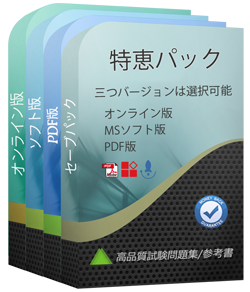あなたはCCD-410試験参考書の更新をどのぐらいでリリースしていますか?
すべての試験参考書は常に更新されますが、固定日付には更新されません。弊社の専門チームは、試験のアップデートに十分の注意を払い、彼らは常にそれに応じてCCD-410試験内容をアップグレードします。
返金するポリシーはありますか? 失敗した場合、どうすれば返金できますか?
はい。弊社はあなたが我々の練習問題を使用して試験に合格しないと全額返金を保証します。返金プロセスは非常に簡単です:購入日から60日以内に不合格成績書を弊社に送っていいです。弊社は成績書を確認した後で、返金を行います。お金は7日以内に支払い口座に戻ります。
割引はありますか?
我々社は顧客にいくつかの割引を提供します。 特恵には制限はありません。 弊社のサイトで定期的にチェックしてクーポンを入手することができます。
Tech4Examはどんな試験参考書を提供していますか?
テストエンジン:CCD-410試験試験エンジンは、あなた自身のデバイスにダウンロードして運行できます。インタラクティブでシミュレートされた環境でテストを行います。
PDF(テストエンジンのコピー):内容はテストエンジンと同じで、印刷をサポートしています。
更新されたCCD-410試験参考書を得ることができ、取得方法?
はい、購入後に1年間の無料アップデートを享受できます。更新があれば、私たちのシステムは更新されたCCD-410試験参考書をあなたのメールボックスに自動的に送ります。
あなたのテストエンジンはどのように実行しますか?
あなたのPCにダウンロードしてインストールすると、Cloudera CCD-410テスト問題を練習し、'練習試験'と '仮想試験'2つの異なるオプションを使用してあなたの質問と回答を確認することができます。
仮想試験 - 時間制限付きに試験問題で自分自身をテストします。
練習試験 - 試験問題を1つ1つレビューし、正解をビューします。
購入後、どれくらいCCD-410試験参考書を入手できますか?
あなたは5-10分以内にCloudera CCD-410試験参考書を付くメールを受信します。そして即時ダウンロードして勉強します。購入後にCCD-410試験参考書を入手しないなら、すぐにメールでお問い合わせください。
CCD-410テストエンジンはどのシステムに適用しますか?
オンラインテストエンジンは、WEBブラウザをベースとしたソフトウェアなので、Windows / Mac / Android / iOSなどをサポートできます。どんな電設備でも使用でき、自己ペースで練習できます。オンラインテストエンジンはオフラインの練習をサポートしていますが、前提条件は初めてインターネットで実行することです。
ソフトテストエンジンは、Java環境で運行するWindowsシステムに適用して、複数のコンピュータにインストールすることができます。
PDF版は、Adobe ReaderやFoxit Reader、Google Docsなどの読書ツールに読むことができます。
Cloudera Certified Developer for Apache Hadoop (CCDH) 認定 CCD-410 試験問題:
1. A combiner reduces:
A) The number of values across different keys in the iterator supplied to a single reduce method call.
B) The number of output files a reducer must produce.
C) The amount of intermediate data that must be transferred between the mapper and reducer.
D) The number of input files a mapper must process.
2. Which best describes how TextInputFormat processes input files and line breaks?
A) The input file is split exactly at the line breaks, so each RecordReader will read a series of complete lines.
B) Input file splits may cross line breaks. A line that crosses file splits is read by the RecordReader of the split that contains the beginning of the broken line.
C) Input file splits may cross line breaks. A line that crosses file splits is read by the RecordReader of the split that contains the end of the broken line.
D) Input file splits may cross line breaks. A line that crosses file splits is ignored.
E) Input file splits may cross line breaks. A line that crosses file splits is read by the RecordReaders of both splits containing the broken line.
3. What types of algorithms are difficult to express in MapReduce v1 (MRv1)?
A) Large-scale graph algorithms that require one-step link traversal.
B) Relational operations on large amounts of structured and semi-structured data.
C) Algorithms that require global, sharing states.
D) Algorithms that require applying the same mathematical function to large numbers of individual binary records.
E) Text analysis algorithms on large collections of unstructured text (e.g, Web crawls).
4. You write MapReduce job to process 100 files in HDFS. Your MapReduce algorithm uses TextInputFormat: the mapper applies a regular expression over input values and emits key-values pairs with the key consisting of the matching text, and the value containing the filename and byte offset. Determine the difference between setting the number of reduces to one and settings the number of reducers to zero.
A) There is no difference in output between the two settings.
B) With zero reducers, instances of matching patterns are stored in multiple files on HDFS. With one reducer, all instances of matching patterns are gathered together in one file on HDFS.
C) With zero reducers, all instances of matching patterns are gathered together in one file on HDFS. With one reducer, instances of matching patterns are stored in multiple files on HDFS.
D) With zero reducers, no reducer runs and the job throws an exception. With one reducer, instances of matching patterns are stored in a single file on HDFS.
5. Which describes how a client reads a file from HDFS?
A) The client queries the NameNode for the block location(s). The NameNode returns the block location(s) to the client. The client reads the data directory off the DataNode(s).
B) The client contacts the NameNode for the block location(s). The NameNode then queries the DataNodes for block locations. The DataNodes respond to the NameNode, and the NameNode redirects the client to the DataNode that holds the requested data block(s). The client then reads the data directly off the DataNode.
C) The client contacts the NameNode for the block location(s). The NameNode contacts the DataNode that holds the requested data block. Data is transferred from the DataNode to the NameNode, and then from the NameNode to the client.
D) The client queries all DataNodes in parallel. The DataNode that contains the requested data responds directly to the client. The client reads the data directly off the DataNode.
質問と回答:
| 質問 # 1 正解: C | 質問 # 2 正解: B | 質問 # 3 正解: C | 質問 # 4 正解: B | 質問 # 5 正解: A |


 弊社は製品に自信を持っており、面倒な製品を提供していません。
弊社は製品に自信を持っており、面倒な製品を提供していません。



 -Ikeda
-Ikeda

